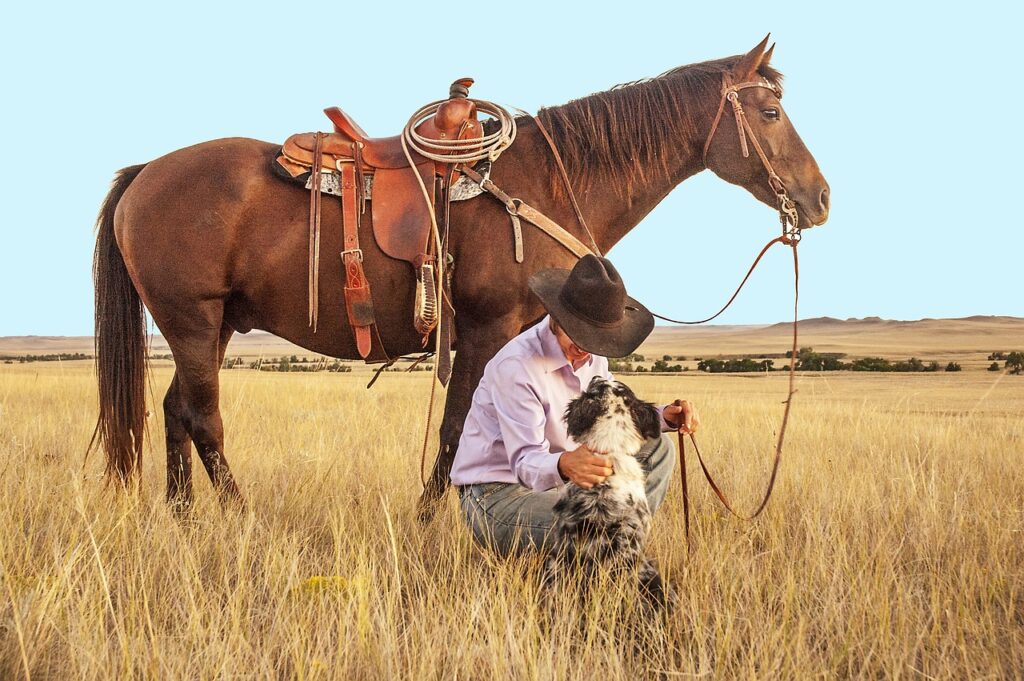
Living with a furry companion brings endless joy, but it can also come with its fair share of challenges. From excessive barking to destructive chewing, dogs can exhibit a range of behavior problems that can leave their owners scratching their heads. In this article, we will explore some of the most common dog behavior issues, providing insights and tips to help you understand and address these challenges effectively. Whether you’re a seasoned dog owner or considering getting a four-legged friend, this article will provide valuable information to create a harmonious and happy home for both you and your beloved pup.

This image is property of pixabay.com.
Separation Anxiety
Excessive barking or howling
One of the common signs of separation anxiety in dogs is excessive barking or howling when they are left alone. Your dog may bark or howl continuously as a way to communicate their distress and seek your attention. This behavior can be disruptive and may also disturb your neighbors.
Destructive behavior
When dogs experience separation anxiety, they may engage in destructive behavior as a way to cope with their anxiety. This can include chewing on furniture, shoes, or other household items. This behavior is not an act of defiance but rather a result of the dog’s anxiety and attempt to relieve stress.
Pacing or restlessness
Another sign of separation anxiety in dogs is pacing or restlessness. Your dog may constantly move around the house, unable to settle down or relax. This behavior is a manifestation of their anxiety and the discomfort they feel when you are not present.
Toileting accidents
Dogs with separation anxiety may also have toileting accidents in the house, even if they are fully house-trained. This behavior occurs because the dog is so anxious and distressed that they cannot hold their urine or feces. Finding urine or feces in the house is not a result of disobedience but rather a symptom of their separation anxiety.
Aggression
Growling and snarling
Aggressive behavior in dogs can manifest through growling and snarling. When a dog feels threatened or is anxious, they may growl or snarl as a warning to others. It is important to address this behavior promptly to prevent any potential harm to yourself, other animals, or people around.
Biting or nipping
If a dog becomes aggressive, they may resort to biting or nipping as a form of defense. This can be dangerous and may result in injuries. Understanding the underlying causes of the aggression is essential in order to address and prevent such behavior.
Food aggression
Food aggression is another form of aggression seen in dogs. This behavior occurs when a dog displays aggressive behavior towards others who approach them while they are eating. It is important to manage this behavior to ensure the safety of both your dog and other people or animals who may interact with them during mealtimes.
Resource guarding
Dogs may exhibit aggression when they are guarding what they perceive as valuable resources, such as toys, bones, or even their sleeping area. This behavior can lead to conflicts and should be addressed through proper training and management techniques.
Excessive Barking
Boredom
Excessive barking can be a result of boredom in dogs. When dogs do not receive enough mental and physical stimulation, they may resort to barking as a way to release pent-up energy or seek attention.
Fear or anxiety
Fear or anxiety can also lead to excessive barking in dogs. When faced with situations that make them feel scared or anxious, dogs may bark excessively as a way to alert their owners or seek reassurance.
Territorial behavior
Some dogs may bark excessively to protect their perceived territory. They may view passersby, other animals, or even people in their vicinity as perceived threats, which triggers their barking behavior.
Attention-seeking
Some dogs may bark excessively as a way to seek attention from their owners. They may learn that barking gets them the desired response, whether it is playtime, treats, or simply their owner’s attention.
Chewing
Teething
Puppies, in particular, may chew excessively during the teething phase as a way to relieve discomfort. Providing appropriate chew toys and monitoring their behavior can help redirect their chewing towards acceptable items.
Boredom
Just like excessive barking, dogs may engage in destructive chewing when they are bored. Providing engaging toys, interactive playtime, and mental stimulation can help alleviate boredom and reduce destructive chewing behavior.
Anxiety
Dogs with anxiety may resort to chewing as a coping mechanism. Chewing can help them release pent-up stress and anxiety. Identifying and addressing the root cause of their anxiety can help manage their chewing behavior.
Lack of exercise
Insufficient physical exercise can lead to excessive energy buildup in dogs, which is often expressed through chewing. Ensuring your dog gets enough exercise and playtime can help minimize this behavior.

This image is property of pixabay.com.
Jumping on People
Excitement
Jumping on people is often a result of excessive excitement in dogs. They may jump as a way to greet their owners or show their enthusiasm. While it may seem harmless, this behavior can become problematic, especially if the dog jumps on children, elderly, or individuals who may be fearful or unable to manage the dog’s behavior.
Attention-seeking
Jumping up on people can also be a way for dogs to seek attention. They may have learned that jumping gets them the desired response, such as petting or treats. Consistent training and redirecting their behavior can help discourage jumping.
Lack of training
If dogs have not received proper training or socialization, they may resort to jumping as a way to interact with people. Teaching them appropriate greetings and reinforcing desirable behaviors can help curb this behavior.
Inappropriate greeting behavior
Some dogs may jump on people as a way to assert dominance or establish their place in the social hierarchy. It is important to provide consistent training and boundaries to ensure that dogs understand appropriate greeting behaviors.
Pulling on the Leash
Lack of leash training
Pulling on the leash is often a result of insufficient leash training. Dogs may naturally want to explore their surroundings and may pull on the leash as an attempt to reach a desired destination. Consistent training and positive reinforcement can help teach dogs to walk calmly on a leash.
Excitement
When dogs are excited about going for a walk or exploring their environment, they may pull on the leash as a way to move forward quickly. Encouraging calm behavior and providing mental stimulation during walks can help reduce excessive pulling.
Lack of exercise
If dogs have pent-up energy due to lack of exercise, they may pull on the leash as a way to release that energy and move faster. Regular exercise and mental stimulation can help minimize pulling behavior.
Lack of focus
Dogs may pull on the leash if they are easily distracted by their surroundings. Improving their focus through training and providing appropriate mental stimulation can help alleviate pulling behavior.

This image is property of pixabay.com.
Digging
Boredom
Digging is a natural behavior for some dogs, but excessive digging can be a sign of boredom. Ensuring that your dog has plenty of mental and physical stimulation can help redirect their energy and minimize excessive digging.
Escape behavior
Dogs may dig as a way to escape from a confined or enclosed space. This behavior can be a result of anxiety or a desire for exploration. Addressing the underlying cause of their escape behavior and providing appropriate supervision can help manage this issue.
Hunting instinct
Some dogs may dig out of their natural hunting instinct. They may be attempting to find small animals or insects underground. Providing alternative outlets for their hunting instinct, such as puzzle toys or interactive play, can help redirect their digging behavior.
Cooling off or creating a den
Digging can also be a way for dogs to create a cool and comfortable resting area. If the weather is hot or if the dog is seeking relief from discomfort, they may dig to create a den-like space. Providing a designated area where they can dig, such as a sandbox or designated spot in the yard, can help redirect their digging behavior.
Fears and Phobias
Thunderstorms or fireworks
Many dogs experience fear or phobia of loud noises, such as thunderstorms or fireworks. This fear can lead to anxious behavior, including shaking, hiding, excessive barking, or attempting to escape. Creating a safe and comforting environment, using calming techniques, and gradually desensitizing them to the triggering sounds can help manage their fears.
Loud noises
Some dogs may be fearful of other loud noises besides thunderstorms and fireworks, such as vacuum cleaners, construction sounds, or even sirens. Providing a safe space for them to retreat to and using desensitization techniques can help alleviate their anxiety.
Strangers or unfamiliar environments
Dogs may exhibit fear or anxiety when faced with strangers or unfamiliar environments. This behavior can manifest through aggression, barking, shaking, or attempting to flee. Gradual exposure, positive reinforcement, and professional training can help dogs build confidence and reduce their fear response.
Previous traumatic experiences
Dogs who have had previous traumatic experiences, such as abuse or neglect, may display fear or phobias as a result. These dogs require patience, understanding, and gentle training techniques to help them overcome their fears and rebuild trust.
Attention-Seeking Behavior
Barking or whining
Attention-seeking behavior can manifest through excessive barking or whining. Dogs may bark or whine as a way to get your attention, whether it is for play, treats, or simply company. Consistent training and providing appropriate outlets for their energy can help address this behavior.
Pawing or nudging
Some dogs may resort to pawing or nudging as a way to seek attention from their owners. They may gently tap you or nudge their body against you to get your focus. Teaching them alternate ways to seek attention, such as sitting or using a specific cue, can help redirect their behavior.
Jumping up
Jumping up on people can also be a form of attention-seeking behavior. Dogs may learn that jumping gets them the desired response, such as petting or playing. Consistent training and teaching them appropriate greetings can help prevent this behavior.
Stealing objects
Dogs may steal objects as a way to seek attention or provoke a reaction from their owners. They may take items and run away, hoping to engage in a game of chase or receive attention. Managing their environment by keeping valuable items out of reach and providing ample mental and physical stimulation can help minimize this behavior.
House Soiling
Incomplete house training
If a dog is not fully house-trained, they may have accidents indoors. Incomplete house training can result from inconsistent or insufficient training, as well as medical issues. Establishing a consistent routine, using positive reinforcement, and consulting with a veterinarian can help address house soiling.
Urinary tract infections
Dogs with urinary tract infections may exhibit house soiling behavior. Infections can cause dogs to have an urgency to urinate or affect their ability to hold their bladder. Seeking veterinary care and treating the infection can help resolve this issue.
Marking behavior
Some dogs may engage in marking behavior, where they urinate in specific areas of the house to establish their territory. This behavior is more common in intact male dogs but can also occur in spayed or neutered dogs. Consistent training, addressing any underlying medical issues or hormonal imbalances, and appropriate supervision can help manage marking behavior.
Anxiety or stress
Dogs may have accidents indoors if they are experiencing anxiety or stress. This can occur when dogs are left alone for extended periods, experience separation anxiety, or undergo significant changes in their environment. Identifying and addressing the root cause of their anxiety, providing mental stimulation, and ensuring they feel secure can help manage house soiling behavior.
In conclusion, common dog behavior problems can vary from separation anxiety to aggression, excessive barking, chewing, jumping on people, pulling on the leash, digging, fears and phobias, attention-seeking behavior, and house soiling. Understanding the underlying causes of these behaviors and addressing them through appropriate training, management, and compassionate care can help ensure a harmonious relationship between you and your furry companion. Remember, patience, consistency, and positive reinforcement are key in resolving these behavior problems and creating a happy and well-behaved dog.

